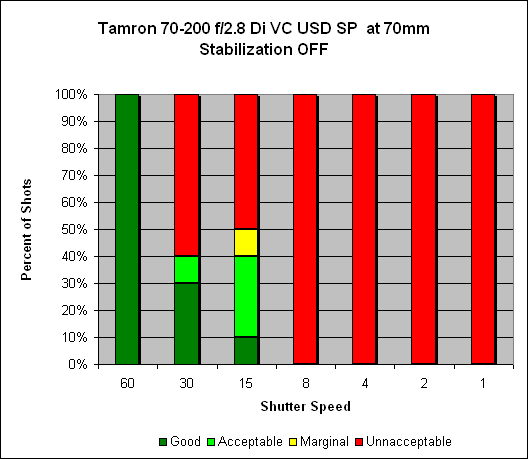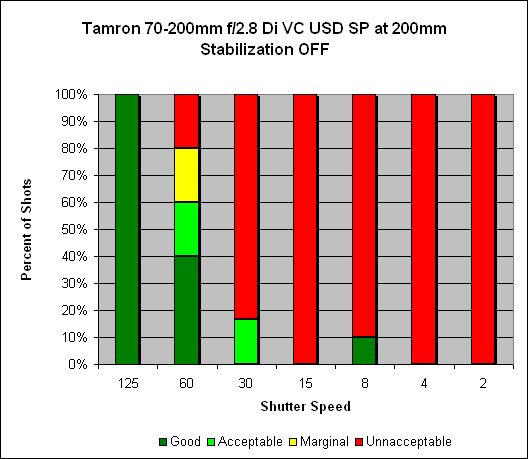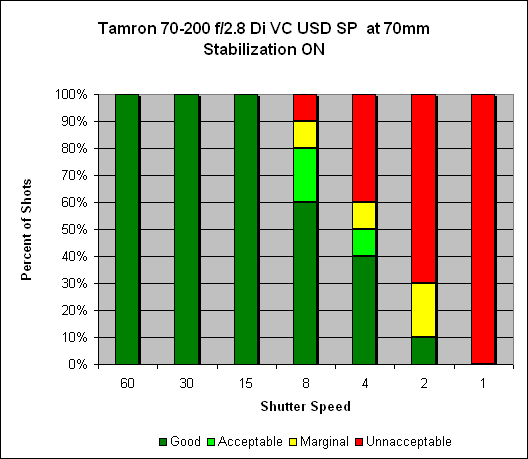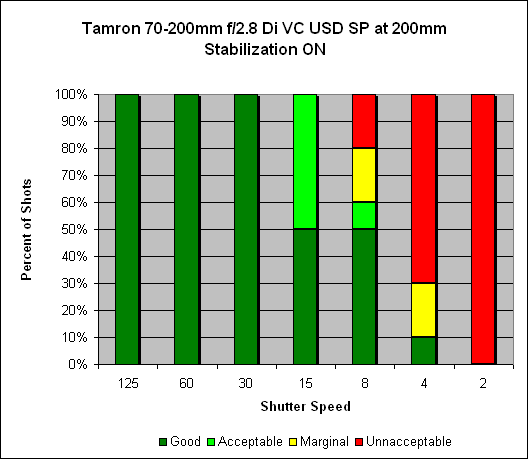Most people tend to think of image stabilization as being mainly for telephoto lenses. While it's true that their longer focal lengths tend to magnify the effects of camera shake, image stabilization can provde a very useful assist at wider angle focal lengths as well; anyone who's ever tried to blur the image of a waterfall, while keeping the surrounding landsape tack-sharp knows exactly what I'm talking about.
At 70mm, we see around two and a half stops of hand-held image stabilization with VC activated. We can see that with the system disabled we get 100% sharp images at 1/60s, on par with the "one-over-focal length" rule of thumb; with the system activated, we get 100% sharp shots at 1/15s, and 60% sharp at 1/8s.
 |
| Mouse over this chart to show results with IS activated. |
Zoomed in to 200mm, we see around 3 and a half stops of hand-held improvement - with a bit of a caveat attached. With VC disabled, we're already getting good hand-held performance - the rule of thumb holds we should be getting sharp shots starting at 1/200s, but Rob was getting 100% sharp at 1/125s - and with VC activated, we get sharp shots all the way down to 1/15s, and 50% sharp at 1/8s. The caveat is that only 50% of the shots at 1/15s are acceptably sharp. So as with most things in life - your mileage may vary.
 |
| Mouse over this chart to show results with IS activated. |
IS systems tend to provide more benefit to less-stable shooters than very steady ones, so most users will see the same or greater amounts of shake reduction as we measured here. You can read more about our IS test methodology here: SLRgear IS Test Methodology, v2.

